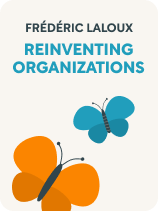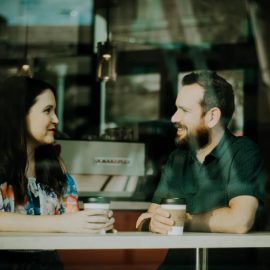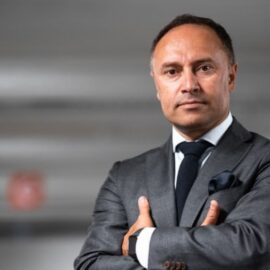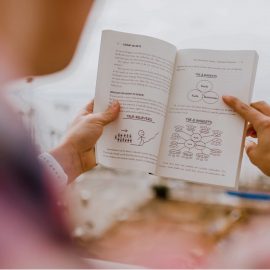

This article is an excerpt from the Shortform book guide to "Reinventing Organizations" by Frédéric Laloux. Shortform has the world's best summaries and analyses of books you should be reading.
Like this article? Sign up for a free trial here.
Which is it better to use—job titles or job roles? What will the role of the CEO be in the future?
In Reinventing Organizations, Frederic Laloux identifies an emerging breed of company that operates from a new set of rules. Laloux claims that humanity is on the cusp of a new paradigm in how we organize ourselves and suggests ways that businesses can adapt to this transition that will elevate how we work and how we live.
Keep reading for an overview of this intriguing book.
Reinventing Organizations by Frederic Laloux
Modern organizations—governments, religions, major corporations—have produced social and technological advances that have lifted humanity into an age of abundance. However, those same organizations restrict individual growth and have led to rampant consumption of resources. Recognizing this, some emerging organizations now operate from a new set of rules that veer away from hierarchical structures based on power and achievement and instead embody self-direction, authenticity, and a collective higher purpose.
In Reinventing Organizations, Frederic Laloux traces the history of organizational structures to show that each leap forward in how we build our institutions corresponds to an equivalent shift in how we view ourselves and the world.
Laloux is a business consultant whose work gave him an understanding of how organizations function. While looking at companies that were successfully pioneering new approaches to work and management, he found an emerging pattern that prioritizes workers’ inner motivations and makes better use of their full human potential.
We’ll trace the stages of organizational development from ancient kingdoms to modern corporations. Laloux uses a color-code shorthand to denote the different organizational models (Amber, Orange, Green, and Teal). For clarity, we will instead use the terms traditional, modern, inclusive, and visionary. We’ll introduce the practices and values that Laloux says are inherent in the next level of human organization while touching on the steps needed to implement these practices today.
The Stages of Organizational Development
Laloux traces a series of paradigm shifts in organizational structure over the past 10,000 years, arguing that each transition goes hand in hand with a change in how we think about the world. Each type of organization evolved to fill a niche and may still be the best option under certain circumstances. Organizations commonly share aspects of several different paradigms at once, including traditional, modern, and inclusive structures.
Traditional Organizations
According to Laloux, the first formal organizations were rooted in strict hierarchical authority structures that maintained their power through tradition and adherence to collective norms. These traditional structures can still be found today in government agencies, militaries, religions, and schools.
Laloux writes that one key innovation of traditional organizations was that authority became invested in positions instead of persons and that rules were encoded into systems of laws. Tradition-based groups thrive best in times of stability, when rules are obeyed and no one deviates from their roles.
Modern Organizations
Because traditional organizations relied heavily on long-term stability and unquestioned authority, they faltered when the Scientific and Industrial Revolutions launched a period of accelerated change. Modern organizations developed, and they prized innovation over tradition, inquiry over dogma, and the merit of individuals over their preordained social class.
Laloux writes that fixed hierarchies of power were superseded by collective business enterprises, the precursors of modern corporations. Modern organizations retain a hierarchical structure, but, in the modern model, previously rigid barriers in class and status are less strict. Direction, goals, and objectives come from the top, but it’s those at the bottom who determine how those goals are put into practice.
Laloux acknowledges that modernity exacts a heavy toll in the form of greed and overconsumption.
Inclusive Organizations
Inclusive groups took root in the 1960s. Laloux claims that inclusive organizations break down traditional and modern power structures by emphasizing group consensus. Whereas modern organizations’ obligations are to their shareholders, inclusive organizations have a wider scope of duty to their employees, their communities, and the environment. Those at the top are “servant leaders” whose role is to support those who work beneath them. Decisions are often based on the organization’s values and culture.
Laloux says that, while inclusive organizations subvert the power structures of tradition and modernity, they haven’t been successful at coming up with workable replacements. Still, Laloux doesn’t see inclusive structures as a failure but rather as a necessary stepping stone to the next stage of humanity’s organizational development.
Visionary Organizations
Laloux dubs all previous structures as “ego-driven” organizations, whereas what follows is the beginning of a different kind of development. He predicts that next-level visionary organizations will see themselves as living things not beholden to the egos of individual members.
Visionary organizations, according to Laloux, will merge the enlightened aspects of inclusivity with the practical savvy of modernity. They will be based on principles of self-management, with no structured hierarchy or push for group consensus.
In his research, Laloux studied 12 present-day organizations that model the attributes he believes will characterize this new type of organization. He believes his results suggest the path that future development may take.
How Visionary Organizations Work
Laloux identified a common thread of practices and philosophies that unites these groups in outlook and approach. These include new assumptions about how people work, fluid power structures, self-management, peer-driven performance, and healthy techniques for conflict resolution.
Fundamental Assumptions
Visionary systems believe that people are generally reasonable and can be trusted to make good decisions. When we’re set free with the trust that we’ll work toward a purpose, Laloux finds that we’re revealed to be creative, intelligent, and willing to hold ourselves accountable for our own mistakes. Furthermore, says Laloux, peer pressure is a far better regulator than punitive action from a battery of bosses.

———End of Preview———
Like what you just read? Read the rest of the world's best book summary and analysis of Frédéric Laloux's "Reinventing Organizations" at Shortform.
Here's what you'll find in our full Reinventing Organizations summary:
- The practices and values that are inherent in the next level of human organization
- A look at the paradigm shifts in organizational structure over the past 10,000 years
- How to implement visionary practices at your company






